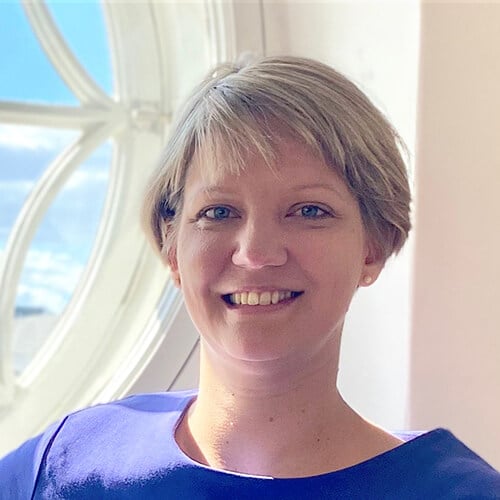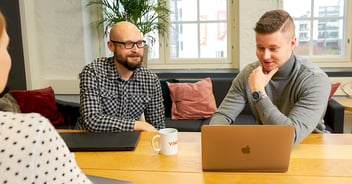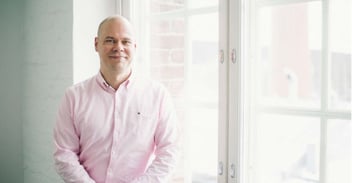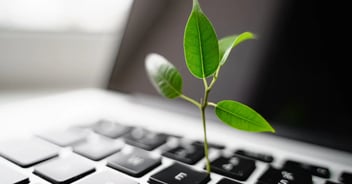Finland’s national circular economy program was launched in April 2021. The program aims to support the shift from a linear to circular economy, where both individuals and companies move towards sharing resources, recycling materials more efficiently and buying the resources they need as a service instead of a product.
Digital solutions play an important part in the program, as its goal is to make Finland a leading country in the digital circular economy. Digitalization will accelerate the traceability of material flows, the resource efficiency of production and data-based decision making and business.
What does the circular economy mean to businesses?
In practice, the circular economy is all about the right things in the right place at the right time. The circular economy is the new foundation of economy where production and consumption fit into the limits of our planet’s carrying capacity. The sustainable use of natural resources comes from keeping materials in use for as long as possible, so that they maintain their value. Instead of disposable consumption, we move towards sharing, renting, repairing, repurposing and recycling goods and raw materials.
Circular economy business models are closely linked to a change in the ownership of goods. Companies will maintain ownership for longer and support the circulation of products and materials during their lifecycle.
Roughly speaking, there are five circular economy business models:
- Products as a service
- Sharing platforms and platform economy models
- Recycling materials and recirculating resources
- Prolonging product life cycles
- Renewable and recyclable materials
Trailblazer companies are already applying circular economy business models, and we can find examples of successful circular economy based business from both Finland and abroad.
How to promote circular economy business models in practice, then? Here are three examples to start from:
1. Offer your users information about resource consumption
Similarly to how wellness trackers help with lifestyle changes, data helps you make eco-friendly changes in your own everyday life. From the user perspective, it can offer information about the environmental impact of their actions and tips on how to reduce their carbon footprint.
Take water usage, for example. Most Finns are surprised by the amount of water they use: the average daily water usage of an apartment building resident is approximately 155 liters. By changing one’s habits, it’s possible to greatly reduce water usage and thus promote responsible water and energy use. Verto’s water meters and the digital services that support them have brought impactful savings to their users. The households using Verto’s meters have reached 30% water savings compared to their earlier usage. Warm water is also one of the biggest energy guzzlers in a household, so saving water has led to an up to 10% drop in energy use compared to the average.
2. Make sure the right things are in the right place at the right time
According to an evaluation by the World Resource Institute, 50 to 75% of the globe’s resources are wasted as part of the production and logistics of goods and services. Saving resources and reducing loss also means saving money.
It’s good to take a look at your own business and explore possible uses to your scrap materials. By actively offering materials for refining, you can create new income flows out of resources that previously brought expenses. For example, Europress’s smart solutions aim to enhance recycling and waste sorting, reduce emissions from waste management and to promote a circular economy. Machine-learning technology can help optimize and predict compactor emptying schedules, thus lengthening emptying cycles and cutting costs of unnecessary emptyings from both the customer and the service provider. This also reduces transportation emissions.
Sharing existing resources can also create new kinds of value, such as flexibility. For instance, already before the pandemic many office spaces were only being used part-time. This led workspace expert Technopolis to create a new coworking concept, UMA Workspace, to bring flexible workspace solutions for companies. Shared office spaces that are flexibly and efficiently available for several companies help save energy and other resources.
3. Help customers make sustainable choices easily
Consumers look for easy and responsible solutions, and different online platforms and stores can offer an easy way to rent products for a short-term need or to buy products second-hand. This extends product lifecycles and brings second-hand goods efficiently back into circulation.
For example, one of our US clients Stichandtie.com offers customers formalwear flexibly for different needs and purposes. Stichandtie.com wanted to help customers to measure and book the right kind of formalwear from their selection. The easy try-on and rental options make sure that customers always have access to formalwear that matches their needs.
It’s time to think about the transition into a circular economy
The circular economy offers a way to promote sustainable development and environmentally friendly business, and it brings growing business opportunities with it. In future, customer needs are met with different kinds of new services, and existing products and materials will circulate more efficiently. These new business models will create close-knit customer relationships and enable a continuous cashflow with the help of services.
Finland has one of the world’s most ambitious circular economy programs, and the transition will be supported with public funding and tightening legislation that aims to slow down climate change and limit the use of natural resources.
Now is a good time to think about how your company’s business can enhance a circular economy and what kind of new partnerships you could create to support it. We at Vincit are happy to help you design new digital solutions and sustainable business.



